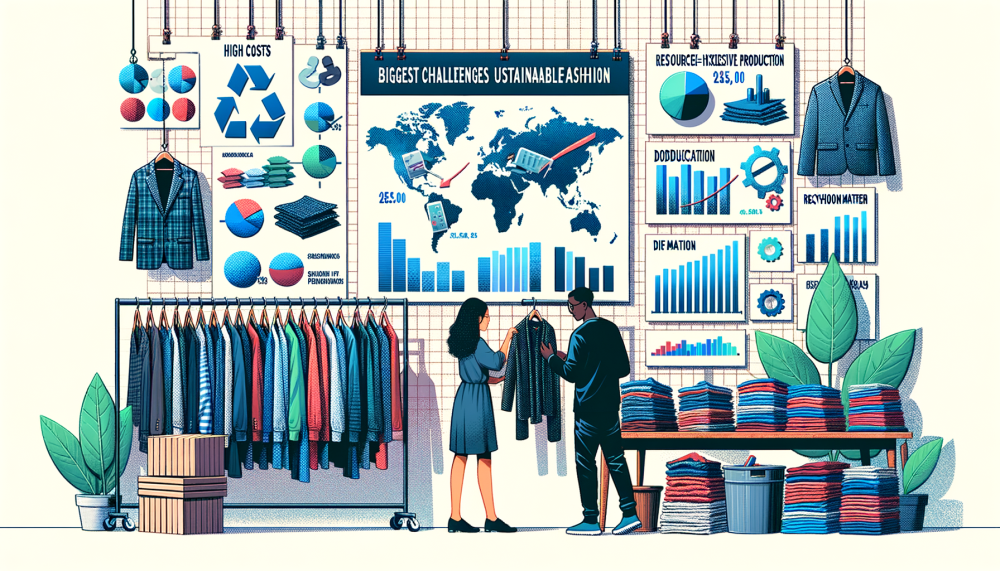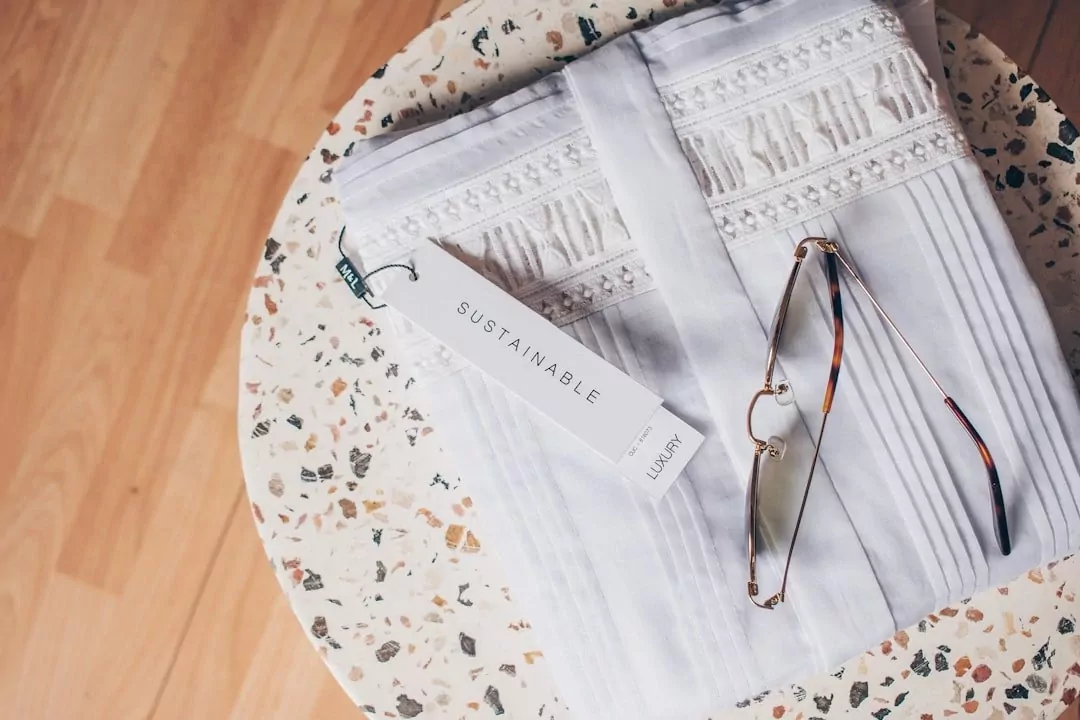Overcoming Sustainability Challenges & Unlocking Growth.
How Brands Can Drive Profitability Through Sustainability and Technology Innovation?
By Annie Graziani
(5 Minute Read)
Welcome fashion business leaders!
Hi there! My name is Annie, and I’m thrilled you’ve found this post. It’s exciting to see it's gained so much popularity recently, so I wanted to add a quick introduction for all the new readers.
I've lived in lifelong amazement of the fashion industry and have always been captivated by its beauty and creativity, but equally drawn to the intricate systems, strategies, and technologies that bring collections to life and carry them to the world.
Let's start with a true story.
I was speaking with a data analytics specialist at a selection consulting firm. We discussed how technology is the foundation of any business and how it plays a crucial role in sustainability reporting. She highlighted the power of expedition-based reporting, which pinpoints areas in a business that need immediate attention.
One of the biggest takeaways from our conversation was the importance of a “single source of truth.”
If data is accurate at the point of entry, then the facts are the facts.
This principle ensures that organizational decisions—whether about supply chain management, material sourcing, or environmental impact—are based on reliable information. And in today’s evolving fashion landscape, sustainability reporting depends on this accuracy.
As we enter 2025, sustainability is no longer a niche trend—it’s shaping the entire industry. From AI-powered fashion innovations to circular economy models, the brands that embrace sustainability will gain a competitive edge. Let’s explore the key trends driving the future of sustainable fashion.
What we're going to cover in this post...
(click to skip to any section)
The good news is that with the right strategies, fashion brands can overcome sustainability challenges quickly and build stronger loyalty, transparency, and long-term success.
Let's Dive in...
Part 1: The Biggest Challenges in Sustainable Fashion Today

Sustainability remains a top priority, but execution is difficult due to:
Supply chain complexity – Tracking ethical sourcing, labor conditions, and carbon footprints across global supply chains remains a major challenge.
Consumer demand vs. affordability – Many consumers want sustainable fashion, but high costs make it difficult to compete with fast fashion brands.
Greenwashing concerns – Shoppers are becoming more skeptical of vague sustainability claims. Brands struggle to prove their efforts without transparent reporting.
Technology adoption – While AI and blockchain offer solutions, many fashion companies have yet to fully integrate these tools into their sustainability strategies.
These challenges make it essential for brands to stay ahead of sustainability trends and adopt new strategies for long-term success.
Part 2: Why These Trends Matter for Brands & Consumers

Sustainability in fashion is no longer optional—it’s becoming a necessity. Consumers, investors, and governments are demanding more accountability from brands. Here’s why these trends are critical:
Growing Consumer Demand
70% of Gen Z shoppers prioritize sustainable and ethical brands. (Example: Patagonia’s resale program, "Worn Wear," keeps used clothing in circulation and aligns with consumer values.)
Luxury brands like Stella McCartney have built their reputation around sustainability, proving that conscious fashion can be high-end and profitable.
Regulatory Pressure & Compliance
The EU Green Deal and New York Fashion Sustainability Act will require brands to disclose supply chain information and meet sustainability standards—or face legal action.
France’s Anti-Waste Law requires companies to recycle or donate unsold clothing instead of destroying it, pushing brands to rethink waste management.
Competitive Differentiation
Levi’s "Water<Less" Initiative reduces water usage in denim production, setting the brand apart as a sustainability leader.
Ever lane's "Radical Transparency" approach openly shares cost breakdowns and environmental impact reports, earning consumer trust.
Technology-Driven Solutions
H&M’s Loop Machine lets customers recycle old clothes into new garments in real-time, reducing textile waste.
Blockchain-powered supply chain tracking by companies like Provenance ensures material authenticity and prevents greenwashing.
By understanding these driving forces, fashion brands can position themselves as leaders in sustainability, ensuring long-term success while making a positive impact.
Part 3: A Proven Approach to Profitable Sustainability

For fashion brands, sustainability isn’t just an ethical choice—it’s a financial growth strategy. To unlock both environmental and business benefits, brands need a structured approach that integrates sustainability with operational excellence. Here’s how successful brands are doing it:
1. Assess & Prioritize Impact Areas
Start by identifying the biggest opportunities for change in your supply chain, product lifecycle, or operations. Where are inefficiencies costing you money? Where can sustainability efforts drive measurable business results? A technology-driven sustainability audit can reveal waste, inefficiencies, and untapped opportunities for optimization.
Example: A footwear brand reduced excess inventory waste by 15% by integrating real-time demand forecasting into its ERP system.
2. Leverage Technology for Data-Driven Decisions
Sustainability is a data challenge. Brands that track and measure their impact can make smarter decisions. AI, blockchain, ERP, and PLM systems can help fashion businesses monitor material sourcing, carbon emissions, and product lifecycle sustainability—leading to more responsible and cost-efficient operations.
Example: A luxury brand cut production costs by 20% by using PLM to track materials, optimize sourcing, and reduce deadstock.
3. Align Sustainability with Profitability
Sustainability should be more than a marketing initiative—it should drive financial growth. Brands that integrate sustainable practices into their business model (such as resale programs, circular design, or on-demand manufacturing) often see higher customer retention, lower costs, and increased investor interest.
Example: A denim brand boosted margins by 10% by adopting a circular business model, offering customers a discount for recycling old jeans into new products.
4. Communicate Transparency & Build Consumer Trust
Modern consumers expect transparency. Brands that educate their audience about supply chain practices, material choices, and sustainability goals build stronger customer loyalty. Third-party certifications, sustainability reports, and impact dashboards make your progress measurable and marketable.
Example: A sustainable jewelry brand increased customer engagement by 40% after launching an interactive sustainability dashboard that tracked its carbon footprint in real time.
5. Execute a Roadmap for Long-Term Change
Sustainability isn’t a one-time initiative—it’s a long-term commitment. A clear roadmap with short-term wins and long-term goals keeps brands on track. This includes:
Phased technology implementation (e.g., ERP for traceability, AI for waste reduction)
Vendor and supply chain optimization
Ongoing internal education and leadership buy-in
Part 4: How to Lead in Sustainable Fashion Over the Next 12-18 Months
Sustainable fashion isn’t just about reducing impact—it’s a growth strategy. Brands that embrace sustainability, data, and operational excellence today will set the industry standard in 2025 and beyond.
Start today by assessing your supply chain, identifying areas to reduce waste, and leveraging data to improve efficiency. Small, strategic changes now can lead to measurable improvements in both sustainability and profitability.
Want expert guidance? Get tailored insights on integrating sustainability into your operations.
